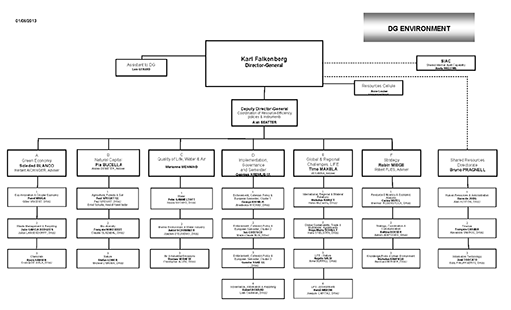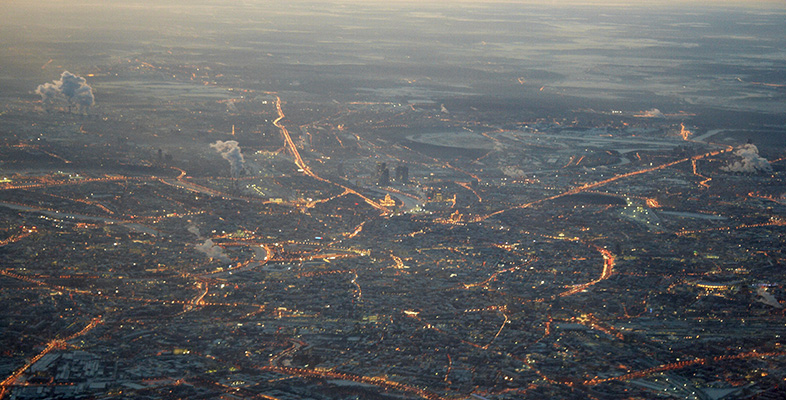8.4.1 Hierarchies
The most common way of showing how an organisation is structured is in the form of an organisational chart or organogram. By convention, organisations have tended to be represented in the form of a hierarchy: with strategic directors and decision-makers somewhere near the top, administration, operations and implementation somewhere near the bottom with ‘middle management’ in, not surprisingly, the middle. A quick search on the internet will reveal hundreds of examples of hierarchical representations of an organisation. The following is an example taken from the European Commission.

You are not expected to engage with the detail of Figure 6. But it should be evident that this organisation is based on a hierarchical structure.
In general terms, within a hierarchy, those ‘at the top’ are expected to be able to see the bigger picture and make decisions based on wider sets of information, while those at the bottom of the organisation engage in ‘lower order’ activities. If something significant goes wrong within an organisation, the person(s) at the top of the hierarchy is expected to carry the ultimate responsibility for an organisation’s decisions.
But while a hierarchy is a common way of thinking about organisations, it often does not fully represent the way an organisation actually functions. This will be evident to you if you have ever worked in an organisation – practices and processes often emerge that are not always consistent with the official hierarchical model. If you have been taking note of major financial organisational failures in 2009–13, you will also be aware that decision making at the top is not the only locus of strategic decision making (where strategic is defined as affecting the future direction and viability of an organisation). Middle management and operational level decision making has literally bankrupted organisations and destabilised global economies. In these and many other cases it is evident that parts of the organisation – particularly those at the top – are not always aware of what other parts are doing because of the diversity and complexity of activities occurring elsewhere in the organisation.
